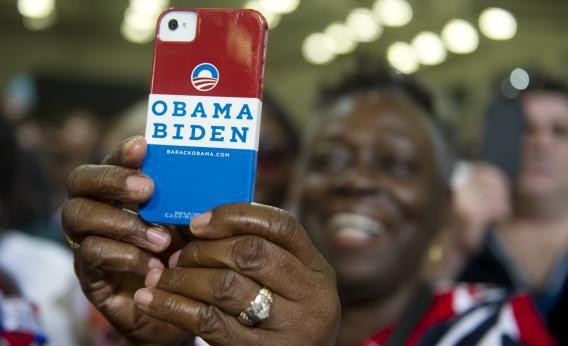At a time when one in three U.S. households lacks a landline phone, it’s hard to believe there are still political pollsters who rely solely on landline phones. But federal regulations prohibiting automated calls to mobile phones mean that most robopolls are landline-only. And robopolls are cheaper and easier than live-interview polls. So a few prominent firms, including Rasmussen Reports, simply ignore the cord-cutters.
Perhaps unsurprisingly, New York Times polling guru Nate Silver finds that the results of these polls skew significantly toward Romney. Adjusting his usual poll-aggregation model to include only landline and Internet polls, Silver finds Romney hot on the president’s heels, both nationally and in key swing states, trailing by an average of just 1.6 percent in the national popular vote. On the other hand, a model that uses only polls that do include cellphones puts Obama well in front, with a 4.1 percent national lead. (Silver’s normal model, which includes both, shows results about halfway in between those extremes, with Obama up 2.8 percent.) Silver adds:
The difference seems especially pronounced at the state level. Mr. Obama got very strong results in a series of NBC News/Marist College polls last week in Ohio, Florida and Virginia, which included cellphones and used live interviewers. Likewise, Tuesday morning’s series of New York Times / CBS News / Quinnipiac polls had reasonably good news for Mr. Obama in Virginia and Wisconsin.
By contrast, the automated polling firm Rasmussen Reports has recently released polls showing Mr. Obama two points behind Mitt Romney in New Hampshire and three points behind in Colorado — the worst results that it has shown for him in those states all year. Another automated polling firm, Gravis Marketing, recently put Mr. Obama at a five-point deficit in Virginia, in contrast to three traditional polls that put him ahead by margins ranging from four to eight points there.
Why is this happening? The most obvious answer is that Obama enjoys more support among minorities and the young, who are less likely to have landlines. A possible separate factor is that Obama seems to do better in live-interview polls, while Romney benefits from automated polls. In the past, that has actually worked to the robopolls’ advantage, because what people tell live interviewers doesn’t always seem to match up to their behavior in the voting booth. But as The New Republic’s Nate Cohn points out, robopolls’ exclusion of cellphones may by now be problematic enough to negate that methodological advantage.
On the other hand, as I’ve written before, polls that include cellphones come with their own drawbacks. Namely, only a small percentage of cellphone users actually respond, and those that do tend to be more socially outgoing and politically active.
All of which points to a simple, if unsatisfying, conclusion: In an age of technological transition from landline phones to mobile devices, no single communication medium can reach a representative sample of the voting public. So even as big data and predictive analytics revolutionize other fields, political polls are not getting any more reliable than they were in the 1990s. They’re still useful for gauging broad trends, but there remains just one way to know who’s going to win on November 6: Wait and see.
